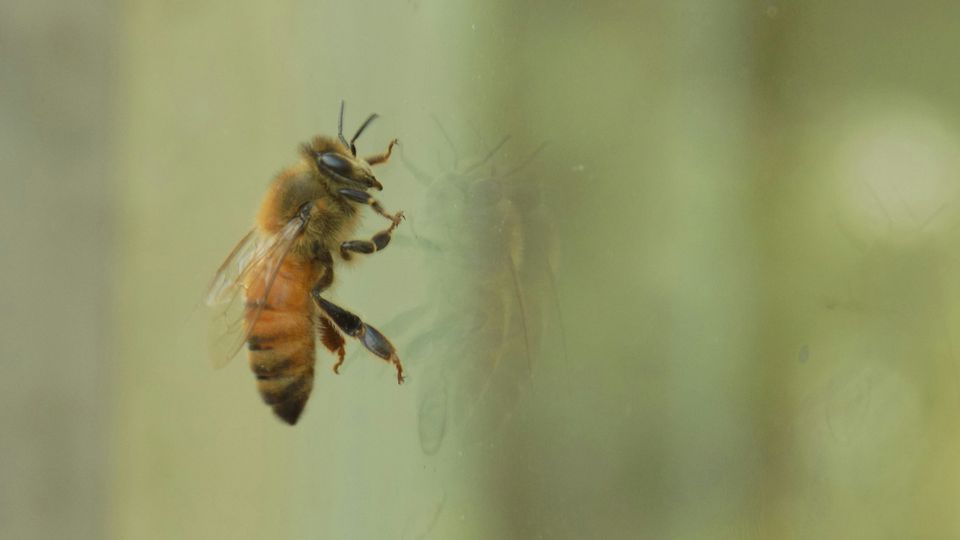Bee-Sting-Inspired Microneedles Offer Pain-Free Drug Delivery
New wearable microneedle patches mimic bee stings to provide painless, long-lasting drug delivery.

Researchers develop new wearable microneedles that improve drug absorption while reducing pain in long-term delivery
Patients who suffer from chronic conditions often require continuous injections of drugs, which is quite painful and often inconvenient. To address this, researchers from South Korea have developed new wearable microneedles which are inspired by bee stings. These electrospun web microneedles (EW-MNs) deliver drugs continuously through the skin without causing discomfort. In animal models, the system enhanced drug absorption while ensuring comfort—offering a safer and convenient alternative to conventional needle systems.
Neurological diseases affect millions worldwide, and the need for long-term patient-friendly treatments has never been greater. While needle-based injections are the standard for most therapies, regular drug injections can often be painful and inconvenient. Microneedles—which are tiny, micron-sized needle systems— have emerged as a promising alternative to conventional needles and offer a pain free way to deliver medicines. However, most existing microneedles are rigid and can cause discomfort during prolonged use and therefore limits their adoption in long-term use.
To overcome this, researchers from South Korea have designed a new microneedles system inspired by the natural mechanism of a bee sting. Led by Professor Wonku Kang and colleague Dr. Sohee Jeon from the College of Pharmacy, Chung-Ang University in collaboration with Dr. Jun-Ho Jeong from College of Medicine at Chung-Ang University, the team introduces wearable “Electrospun Web Microneedle (EW-MNs)” based patches which enable long-term and continuous drug delivery through the skin. The study was made available online in Advanced Healthcare Materials on July 31, 2025.
“Unlike traditional rigid microneedles, which can cause irritation during prolonged use, our EW-MNs are soft, breathable, and remain anchored to the skin just like a bee stinger,” explains Prof. Kang.
To fabricate the EW-MNs, the researchers used an electrospinning process (a technique that uses an electric field to spin very fine polymer fibers) to create a web of nanoscale fibers on metal microneedles. This resulted in a fibrous layer around the microneedle tips which mimic the barbed structure of a bee sting. As a result, the microneedles anchor securely into the skin and ensure a steady attachment for continuous drug release. The EW-MNs were then attached to an adhesive tape and a backing layer to form a patch.
To test the efficacy of the patch, the team loaded the EW-MNs with rivastigmine (a drug commonly used to treat Alzheimer’s and Parkinson’s disease). In animal studies using guinea pigs, the microneedle patches significantly improved the absorption of rivastigmine— releasing over twice the drug and covering a five-fold larger area compared to conventional approaches. Importantly, all this was achieved while maintaining minimum discomfort, and even if any mild skin irritation occurred, it disappeared quickly on removing the patch.
Emphasizing on the impact of this technology, Prof. Kang says “With further development, these EW-MNs could revolutionize drug delivery, allowing patients to receive effective long-term treatments without the fear or discomfort of needles!”
In the future, the team aims to extend the applications of EW-MNs beyond neurological diseases, offering medicated patches for a wide range of other chronic diseases. This approach also holds value for elderly patients, children and cases where safety and patient compliant treatments are urgently needed. Overall, the study demonstrates a perfect example of how nature can drive innovations, bringing us one step closer towards safer, more comfortable, and patient-friendly drug delivery.
Reference: Ha JH, Lee YW, Hwang SH, et al. Bee stinger-like wearable electrospun web microneedles for sustained CNS drug delivery. Adv Healthc Mater. 2025. doi: 10.1002/adhm.202501371
This article has been republished from the following materials. Note: material may have been edited for length and content. For further information, please contact the cited source. Our press release publishing policy can be accessed here.



